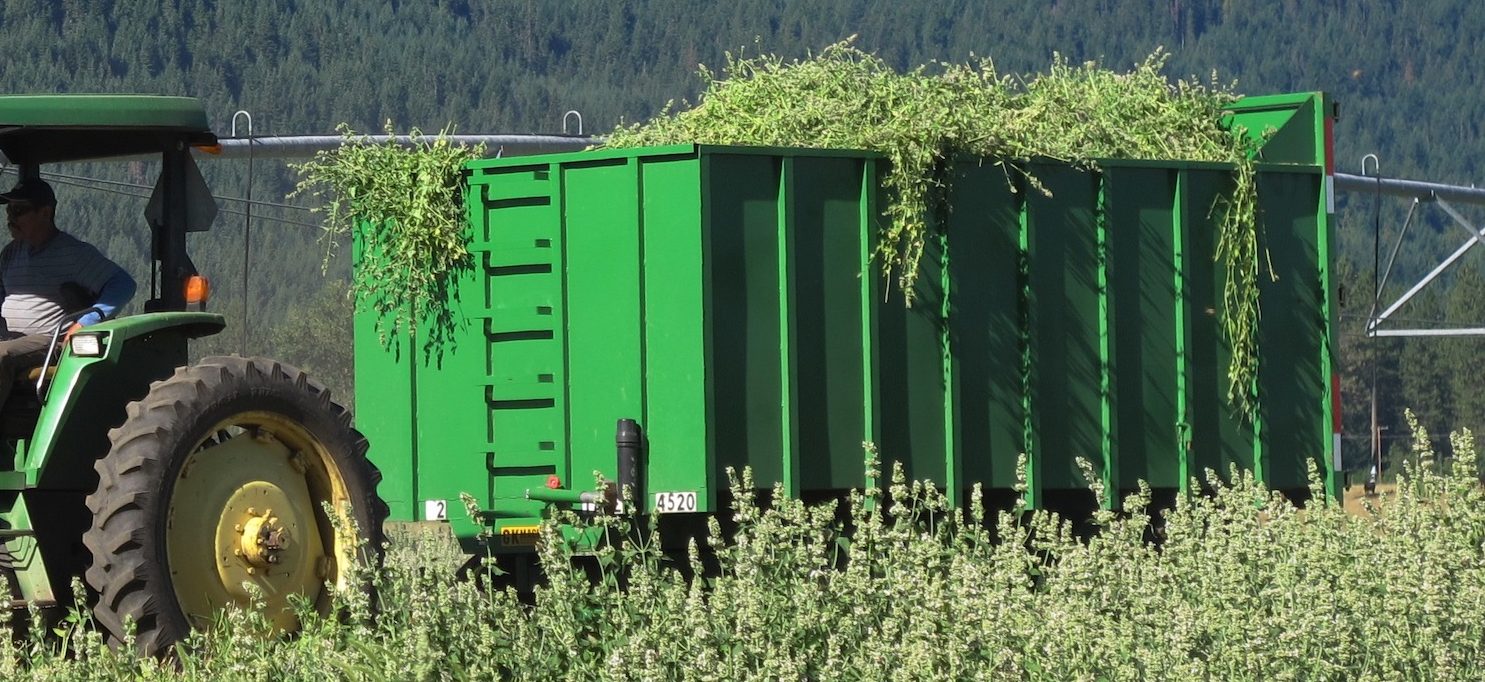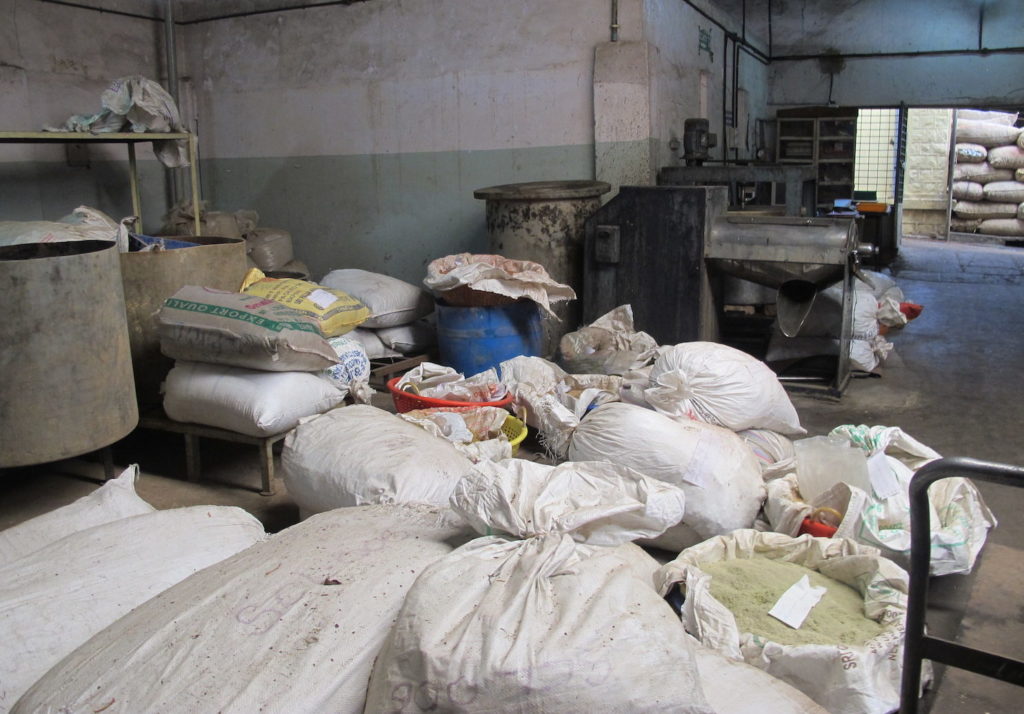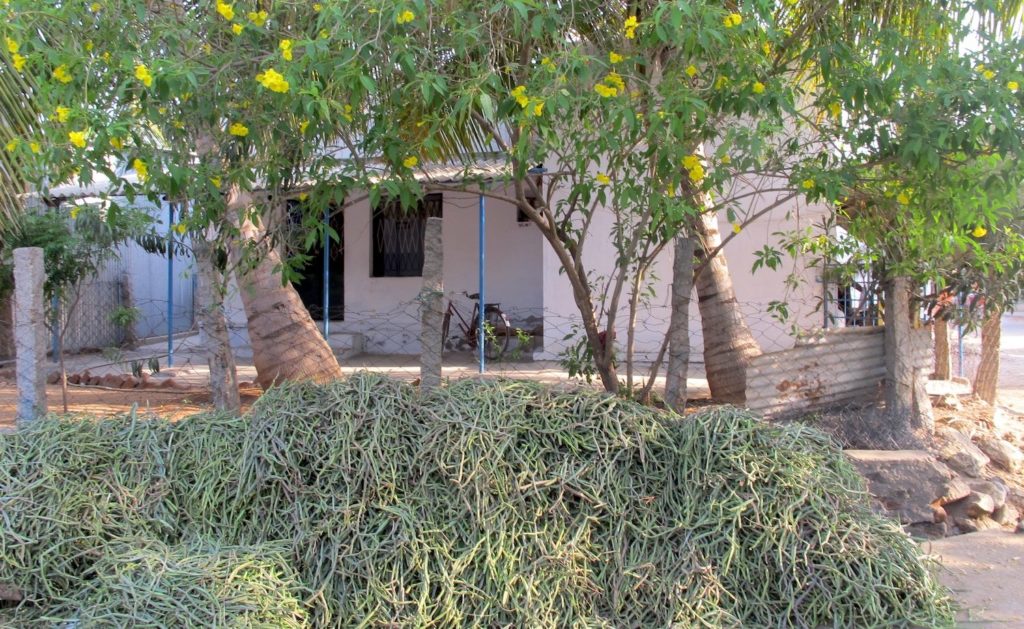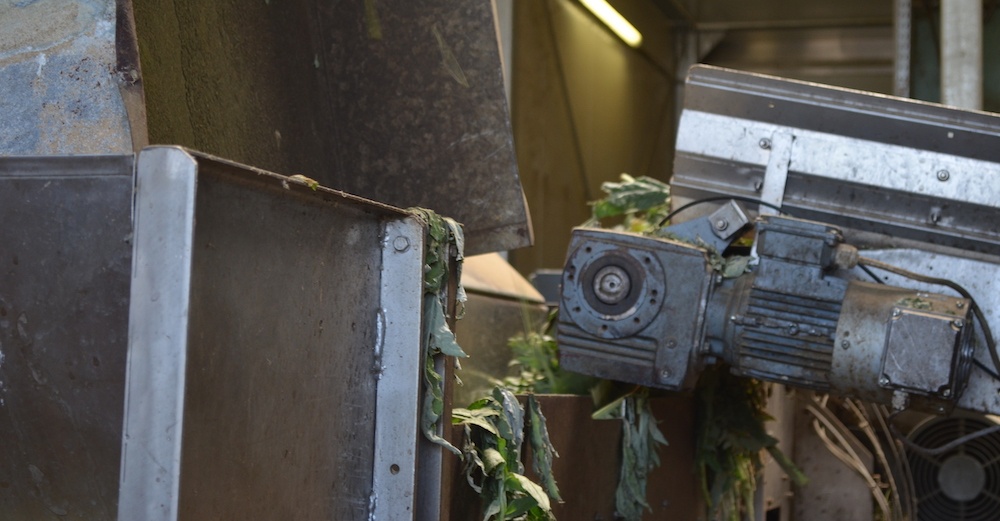Raw Material Waste

On-field waste
On-field waste includes poor planting density, poor germination, poor quality, disease, and weather damage. Minimizing waste begins with good seed selection and good farming practices to improve the quality of the plants (and thus minimize loss) and the resiliency of the soils.
Post-harvest Handling Waste
- Drying and Storage
The greatest losses of raw material come in post-harvest handling. These losses typically come from poor quality drying and storage facilities. It is crucial to dry plants correctly. Mark Wheeler founder of Pacific Botanicals said that correct drying means drying the plants quickly, maintaining good air flow, keeping humidity low and the heat even and not too high. Storage facilities are also critical. Some species are more versatile than others in both drying and storage. Aerial parts have very short shelf-lives but roots and tough parts, when well stored, like cloves, last for longer.

A storage facility in southern India. Poor drying conditions account for some of the greatest loss of raw material in the supply network.
- Processing Loss
More loss comes in processing. The efficiency of the machinery, the type of processing (whether producing a powder or rough cut), the species, the type of herb, and the specifications of the buyer all impact how much waste is generated during processing.
If the quality specification calls for only mature fruits, the sorters and graders may pull immature fruits from the line inspection process. Or, if the quality specification calls for leaves with no discoloration or blemishes, or leaves under a certain width or length, they may be sorted out from the inspection line early on. This raw material is typically considered waste.
In terms of the type of plants, fibrous herbs such as licorice or marshmallow generate more waste in processing than turmeric. With crops like plantain and nettle which have a high stem to leaf ration, roughly 50% is considered loss in milling.
-
Specifications and Quality Control
Finally, the type of processing impacts how much waste is generated. Josef Brinckmann explained that when trying to optimize tea-bag-cut (TBC) particles of licorice root, some millers lose 30 to 40% (or even more) to the powder fraction. If the company does not have a customer for the fine powder, then it may well be loss. Therefore the price of the TBC particles increases in order to compensate for the significant loss to powder. Or, if the company has more sophisticated equipment, it may be possible to repurpose the powder by compressing it into larger, denser granules or pellets that can then be admixed back with the TBC particles.
Often times the powder fraction tests higher for certain undesirable content that could put the ingredient out of specification. However, this depends on the species. With machine harvested field crops, depending on how close to the ground the cutters are adjusted, there may be a-lot of dirt weight in the harvest. Post-harvest processing using gravity separators, de-stoners, magnets, etc. will pull out gravel, nails, cigarette butts, and most dirt, but fine dirt may occur at the same particle size and density as the herb powder. Oftentimes the powder fraction is unsalable, after one tests the ash and acid-insoluble-ash content.
Turning Waste Streams into Value Streams
- Euromed, an ingredient supplier based in Barcelona, has broad goals to reduce waste production and implement ecofriendly waste management. In an innovative partnership, waste products from Euromed’s saw palmetto fruit extraction are used to develop ecological dyes fully traceable from nature to fashion produced by Archroma®. Read more here.
- Applied Food Sciences (AFS), an ingredient supplier in Austin, TX, has found a use for the sweet coffee fruit outer layer known as “cascara.” This cascara is not to be confused with cascara sagrada (Rhamnus purshiana). This fruit coating is typically discarded as the coffee beans are processed, most of it ends up in landfills. AFS developed CoffeeNectar™ cascara fruit extract from this by-product to provide a use for this fruit coating. This has that both generated additional revenue for coffee farmers and kept the fruit coating out of waste streams. Link coming soon..



Comments